
Project Category: Civil
“As a river city, we will always need to prepare, respond and adapt to floods. And the pressures of a changing climate only bring a greater risk of more severe and frequent flooding. That’s why building resilience to flooding is one of our top priorities.“
-The City of Calgary
Join Our Presentation
Contact if experiencing technical difficulties:
deanneella.melgar@ucalgary.ca

About Our Project
Our project involves an evaluation of the Downtown Flood Barrier as designed by the City of Calgary and the design of pier and pile caps for the Jaipur Bridge Replacement Project.
Project Background: Understanding the Why
In June 2013, the City of Calgary and many other communities in Southern Alberta experienced record high flow rates in the Bow and Elbow Rivers which caused rapid and intense flooding. This resulted in more than $5 billion in financial losses and property damage in Alberta, with more than $400 million to City of Calgary infrastructure, and resulted in the loss of five lives. In response, the City of Calgary initiated a three-layer flood mitigation plan which focused on flood protection and mitigation along the Bow and Elbow rivers at the upstream level, community level, and property level. The city’s flood mitigation plan will have a positive impact on the communities and structures in the downtown area both aesthetically and in resiliency against future flood events. Parts of the Downtown Flood Barrier are incorporated into the City’s Eau Claire Area Improvements Plan which also involves the construction of a new Jaipur Bridge. The original bridge has reached the end of its life and will be replaced.
Scope
This Capstone Project consists of an analysis into one element of the City of Calgary’s flood mitigation plan, the Downtown Flood Barrier. An analysis of environmental, social, and economic impacts of the barrier is also investigated. A simulation of the barrier and the flow pattern is provided using HEC-RAS, a fluid dynamics software. The project also includes a brief design analysis of a new foundation for the Jaipur Bridge. The design for the bridge is informed by the analysis of the flood barrier and by modelling of the Bow River. Additionally, the team carried out a Computational Fluid Dynamic (CFD) Analysis to better understand the interactions between the water and the bridge supports.
In addition to these, our project looks at the community and stakeholder engagement for both projects, the environmental effects of the project, and a cost-benefit analysis for the flood barrier. An analysis of these would verify the feasibility and validity of the projects and further clarify the benefits of the projects.
Meet Our Team Members
Details About Our Design
Flood Barrier
Background
What is a 1:100 flood?
A 1:100 year flood event is a statistical meaning that in any given year there is a 1% chance this area will flood at an estimated degree of severity. Often a common misconception, a 1:100 year flood does not mean the flood will occur in the area only once every 100 years. It’s similar to rolling a 100 sided die every year and seeing if you land on “Flood”. The same concept applies for 1:70, 1:200, and 1:500 year flood events.
The Calgary Downtown Flood Barrier is designed to protect against a 0.5% chance flood (1:200 flood event), with a flow rate of approximately 2400 m3/s. In comparison to Calgary’s 2013 flood, which hit a record of approximately 1700 m3/s, the flood barrier is designed to withstand a much greater flood disaster [1].
With an environmentally integrated design, the 2 km barrier consists of earthwork (berms and reinforced terraces), raised promenades (a multi-use elevated pathway), programmed walls (a raised wall system) with public amenities like benches, and Post+Panel systems which will be mobilized during floods. Construction of the barrier is currently underway, with project completion expected in 2023 [2].
Flood Modelling
Flood modelling was completed for the Downtown Flood Barrier to evaluate its impacts during three different flood scenarios – a 1:100 year flood, a 1:200 year flood, and a 1:500 year flood [3][4][5]. The results of the modelling displayed below clearly show that the flood barrier is effective at preventing flooding in Downtown up to its design limit (1:200 flooding). In the event that flood does occur in Downtown during a 1:500 year flood, its expected impacts are greatly mitigated.
The links provided below will take you to videos showing the output of our flood model.
First, the expected flood without the barrier is shown, then the expected flooding with the barrier present is shown. Finally, the difference in maximum inundation between these scenarios is displayed.
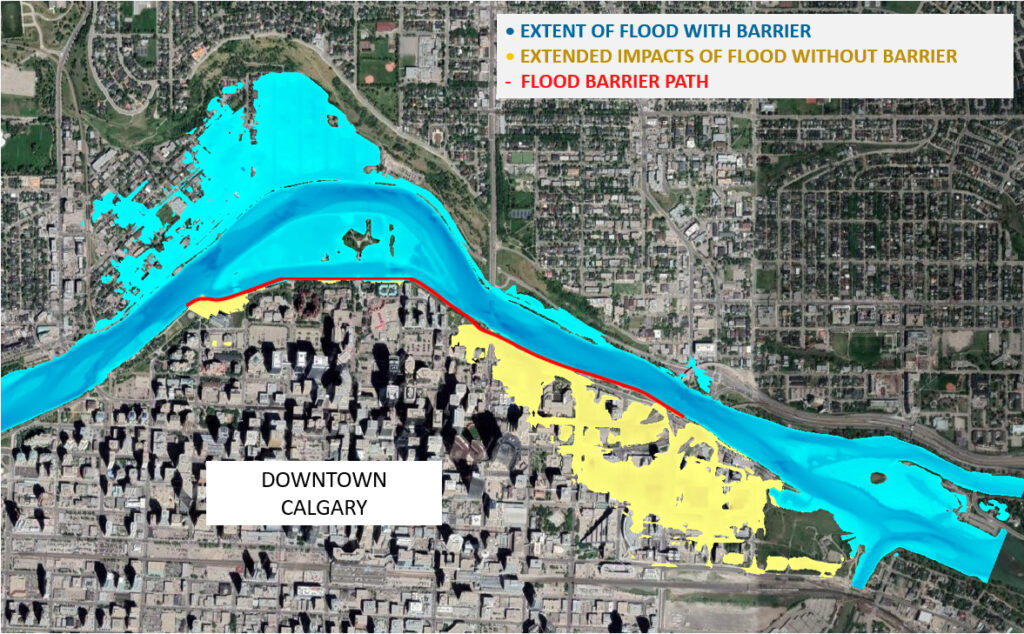
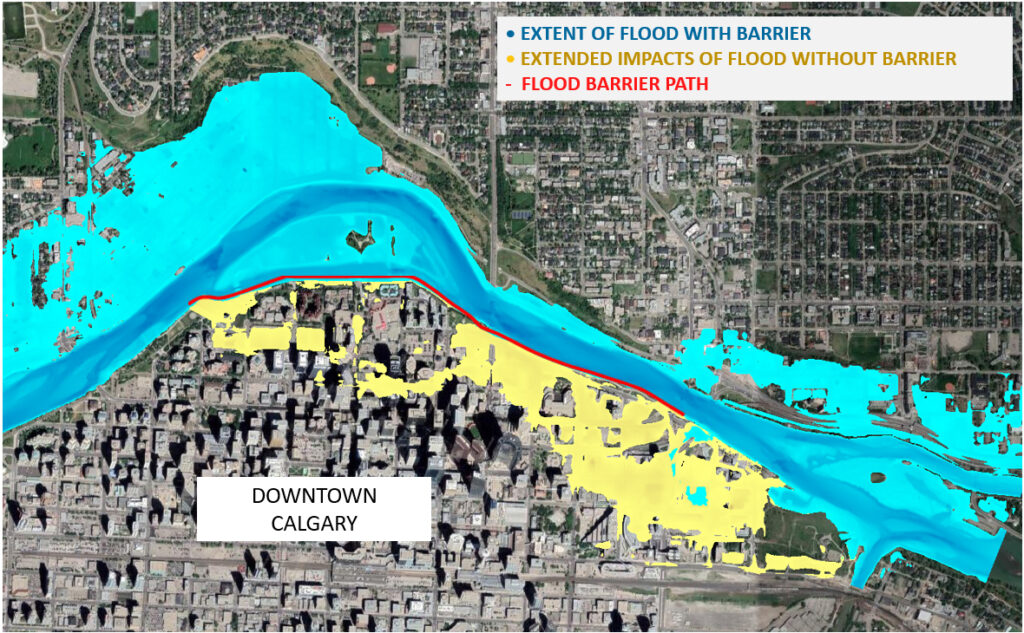
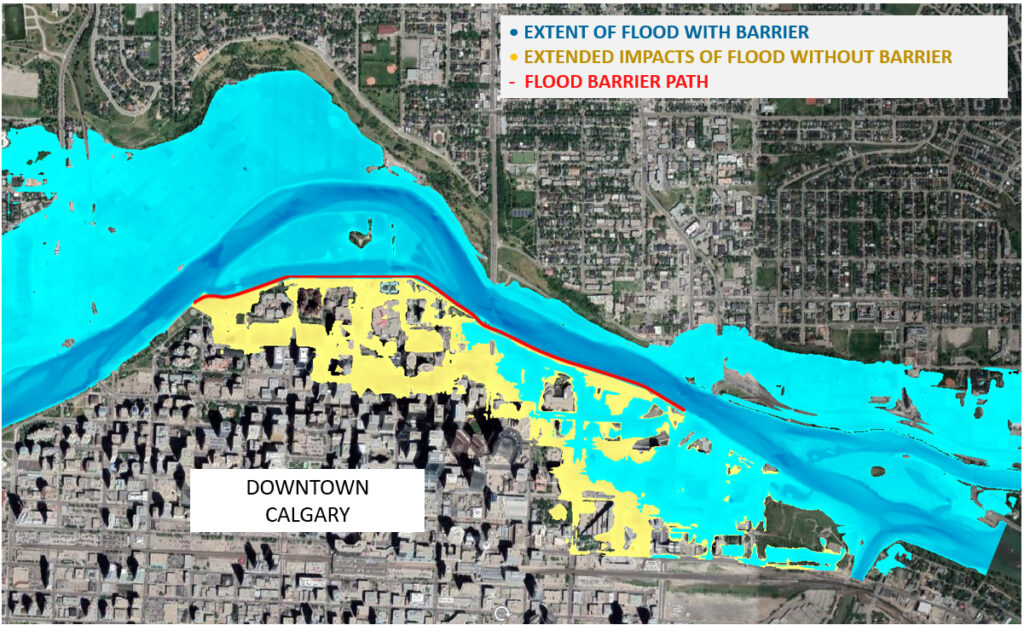
Design Analysis
A design analysis was done on the barrier looking at its structural and geotechnical integrity. As the barrier is constructed to help mitigate flooding for communities along the Bow River, it is important that the barrier itself can sustain external pressures and flooding conditions. The geotechnical analysis was done on the barrier cross section provided in the figure below and it assumed worst case scenario conditions where the water is at the top of the barrier and the soil on both sides is fully saturated. The stability criteria analyzed were: translational failure, rotational failure, deep seated failure, soil bearing failure, and settlement. The analysis concluded that the current Downtown Flood Barrier design excels in all criteria mentioned above with having high factors of safety for all failure mechanisms and being within prescribed limits for settlement [3] [6][7].
Analysis was completed on multiple material characteristics to determine whether concrete would serve as a functional material for this project. As the barrier is planned to be built a distance away from the river, erosion is a minimal concern as it will only be experienced for limited times during flooding. Additionally, concrete is a durable material where the main concern in this use is with freezing and thawing wear. This concern can be fully mitigated with the use of frost-resistant aggregate, commonly found in concrete mixes, which will allow concrete to be immune to freezing. To determine whether the concrete walls will be able to withstand the flooding, a simple pore pressure analysis was completed to determine the compressive strength the barrier needs to withstand. As a result, we can conclude that the concrete used will be sufficient to withstand the water in a given flood scenario.
Jaipur Bridge Foundation
Pile and Pile Cap Design
The Jaipur Bridge part of the project consisted of designing the pier and pile caps for the replacement bridge. With the use of existing drawings of the bridge, we independently calculated the structural loading on the bridge and designed pile caps to support these forces given the geotechnical conditions present on the site. For the design of the Jaipur Bridge foundation, three alternative methods were considered: shallow foundations, bored cast-in-place concrete piles, and driven steel piles. Based on the geotechnical conditions on site, the bored cast-in-place piles method was chosen. A benefit of this method is it can potentially mitigate uncertainty about the depth of bedrock at the pile locations [2][6][7].
The final design details for the piles and pile cap supporting the bridge piers are summarized below:
- Three 1.1 meter diameter piles
- 3.3 meter spacing measured center to center
- Length of 10 meters
- Reinforced with 16 – 30M bars arranged in a circular pattern
- 75 mm concrete cover surrounding the reinforcement
- Pile Cap
- Dimensions of 8800 mm by 1750 mm by 2000 mm
- Reinforced by 20M bars spaced at 100 mm
- 150 mm concrete cover surrounding the reinforcement
The final design details for the piles supporting the bridge abutments are summarized below:
- Three 800 millimeter diameter piles
- 2.5 meter spacing measured center to center
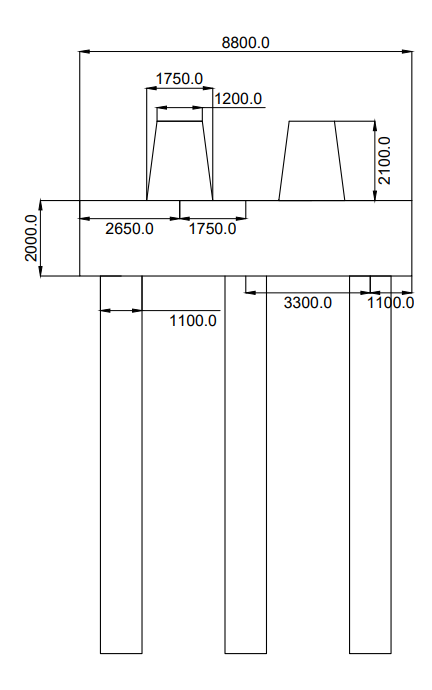
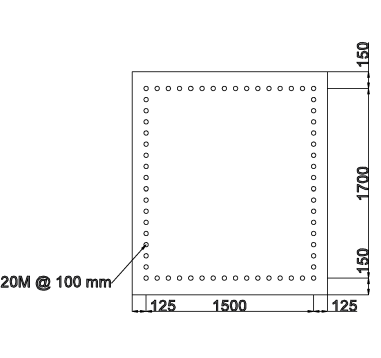
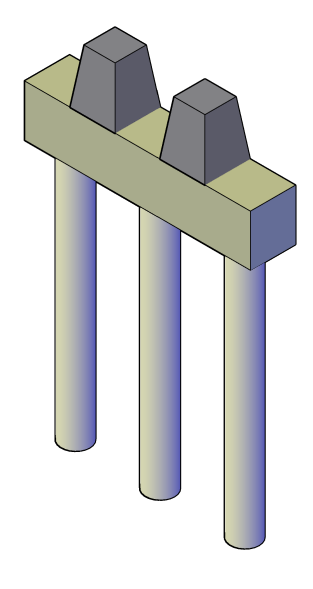
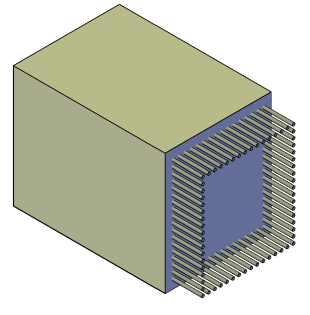
Computational Fluid Dynamics (CFD) Simulations
For the Jaipur Bridge part of the project, the team created computational fluid dynamics (CFD) simulations using the FLOW-3D Hydro software to see how the newly designed Jaipur Bridge supports would react to modelled flood scenarios. Below are the results of the 1 in 100-year flood model. A simplified Prince’s Island lagoon bed was created embedded in which are the replicated bridge support geometries.
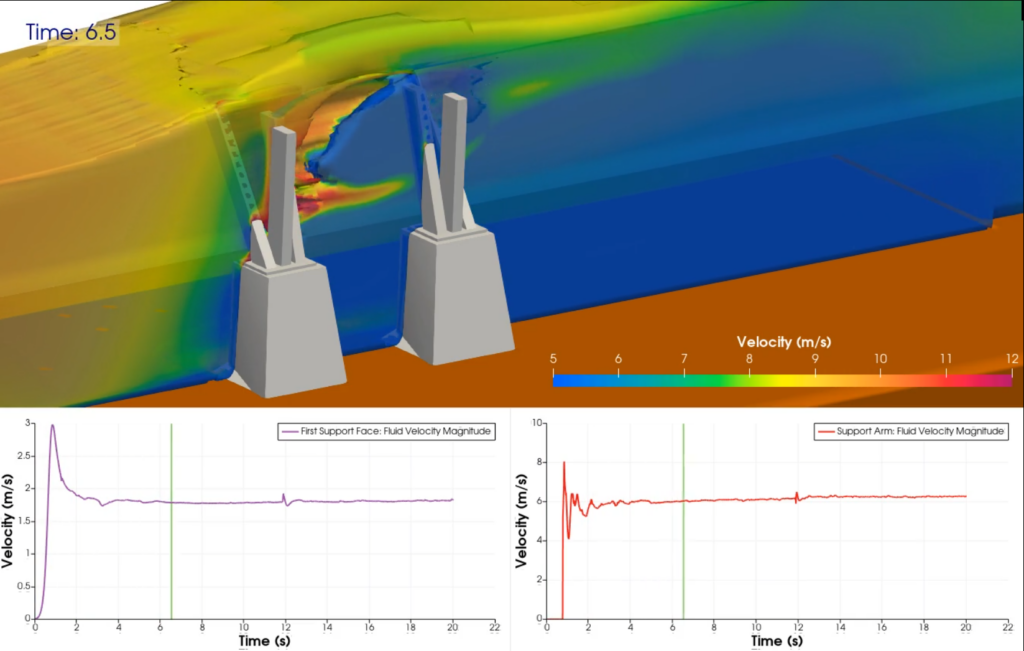
One of the use cases for a CFD analysis is to optimize bridge support geometries. A color gradient can help distinguish regions of high and low water velocities in the model space. A designer may want to modify a design to influence where regions of high velocity water flows to minimize stress on the structure or limit scour on the river or lagoon bed. This helps control degradation and aggradation of bed materials. Here, probe points were added to critical points on the support geometry, including the first support’s pedestal face (probe 1) and on the first arm support located right at the water boundary (probe 2). The detected adjacent water velocities are graphed below as a function of time.
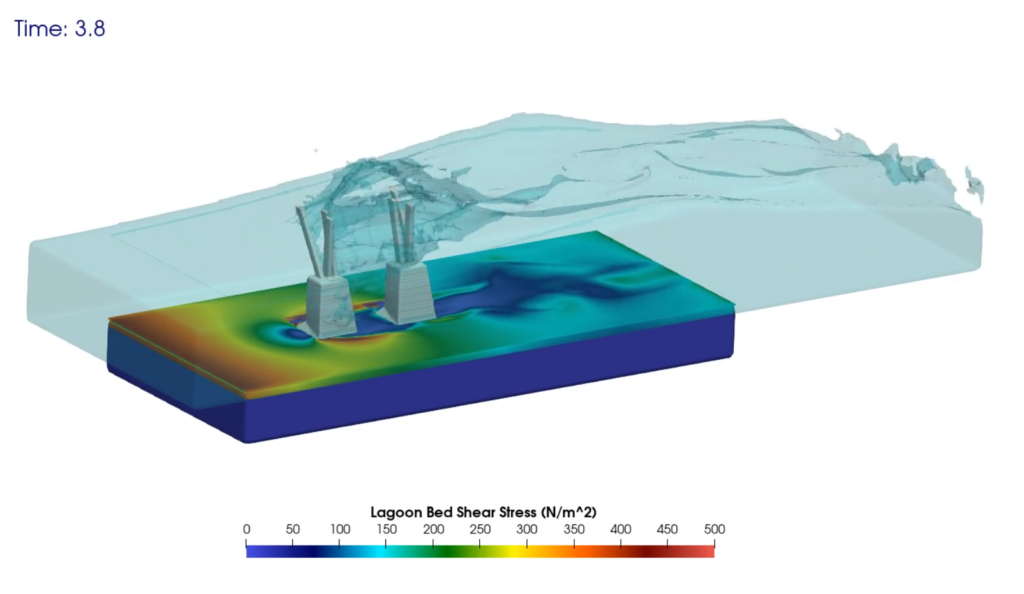
Other ways to inform design include measuring shear stresses endured by the lagoon or riverbed. Here we see bed shear stress resulting from fast moving water varying anywhere from near zero to 500 Pascals, which is the highest shear in areas adjacent to the structure as water moves around the support geometry. Much research has been done to determine minimum critical shear stresses required to dislodge different types of soils. Typical critical shear stresses associated with materials similar to those of the lagoon bed can range anywhere from around 1.7 to 3.2 N/m2 [8]. From the animation above, we can see that the shear stresses can reach close to 500 N/m2. These data can help inform design considerations such as rip rap extent, size, and placement as well as choice of lagoon bed material in the case of engineered, non-nature lagoons. Combining the results from sediment transport research with a CFD analysis can make for powerful analytical models.
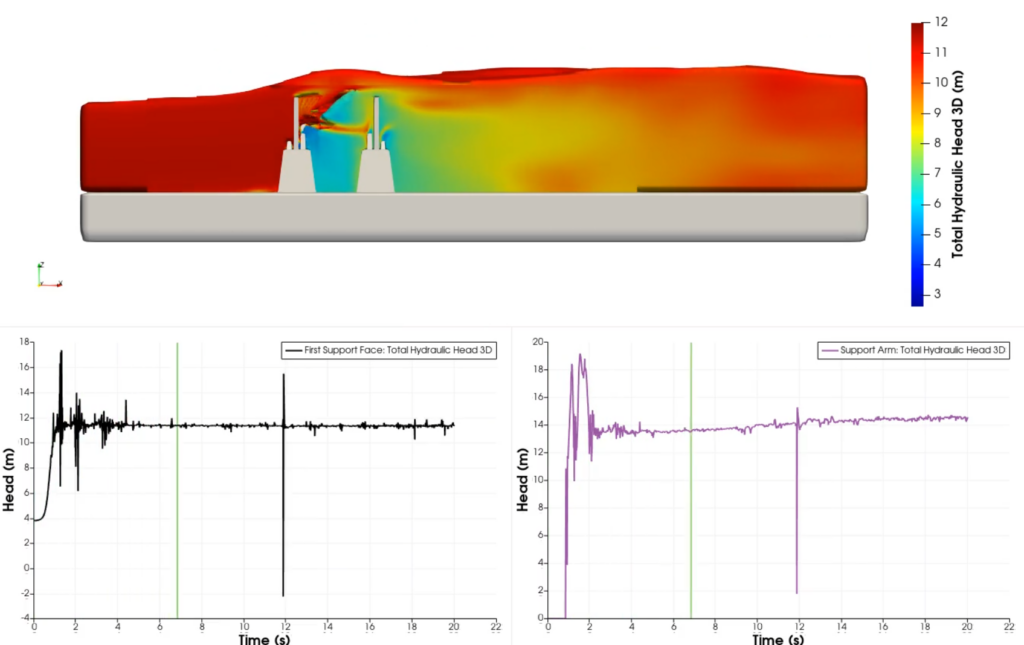
Total hydraulic head describes the pressure exerted by a fluid through its height, movement (velocity), and depth. In the above animation, we can see the total hydraulic head of the water stabilizing at just under 12 meters of head for probe 1 (left), and around 14 meters of head for probe 2 (right).
Probe 1 is located at a stagnation point; most of its hydraulic head results from hydrostatic, whereas probe 2 is located at a location where high velocity fluid dominates. Most of the hydraulic head at this point results from the water’s speed. Additionally, the total hydraulic head at the end of the model space is slightly less than the hydraulic head at the front of the model space (9.5 to 10 meters vs 12+ meters). A precise model can measure the energy losses of the water directly attributable to the geometry being tested by measuring these differences in total hydraulic head.
Measures of hydraulic head from CFD analysis can help guide engineering design by estimating wave loads on support structures and may help avoid costly prototyping [9].
Forward ReThinking : Designing for the Future
Sustainability
Flood mitigation and city resiliency has been an increasingly discussed topic among many cities and jurisdictions. The United Nations has set 17 sustainable goals with one of the goals being sustainable cities and communities [10]. This goal surrounds the idea of city resiliency and the importance of having a disaster mitigation plan to minimize potential risks. With the City of Calgary investing money into a flood barrier now, they will mitigate future risks and the need for future spending.
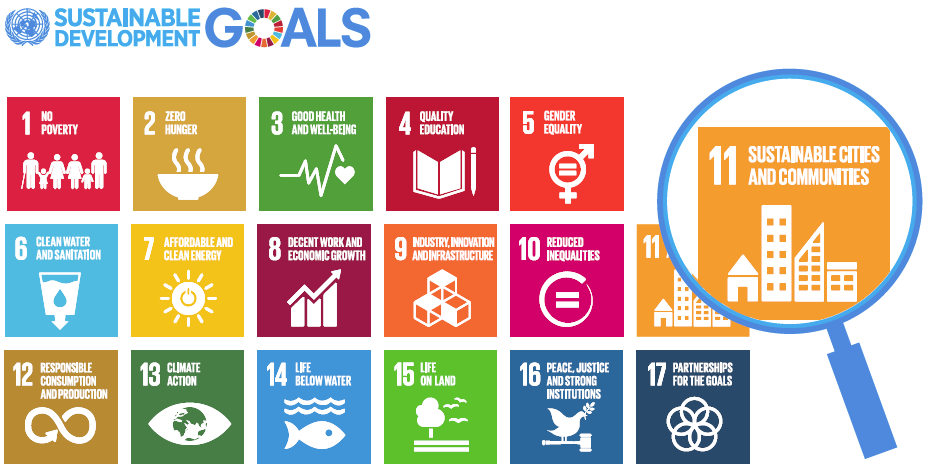
Environmental Considerations
This segment of the Bow River through the project zone is home to a wide range of aquatic species and animals, including many species listed as ‘Threatened’ under the Species at Risk Act. Some of these species include:
- Northern Leopard Frog ‘Special Concern’
- Bank Swallow ‘threatened’
- Barn Swallow ‘threatened’
- Common Nighthawk ‘threatened’
- Evening Grosbeak ‘Special Concern’
- The Little Brown Myotis ‘Endangered’
- Brown Trout ‘threatened’ [11].
Analyzing the environmental impacts of constructing the flood barrier, the finished flood barrier and the construction of the Jaipur Bridge is crucial to protecting Calgary’s vast variety of wildlife. Topics such as potential for chemical leaching, animal access to waterways, animal reproductive zones and material considerations were explored.
The Bow River is classified as a Class C water course defined as exhibiting “Moderate Sensitivity, habit areas sensitive enough to potentially damages by unconfined or unrestricted activities within a water body; broadly distributes habitats supporting local species population” This section of the Bow River has a RAP from May 1 to July 15 and September 16 to April 5 (ESRD 2012) to reduce the potential for effects to occur during periods of fish spawning, egg incubation, and early development. The Bow River and surrounding riparian areas also provide potential habitat for aquatic and semi-aquatic wildlife that could be affected by Project activities [11][12].
Many Mitigation strategies from the project to prevent disturbance to Wildlife:
- Conduct a pre-construction nest sweep 7 days prior to construction and 4 days prior in a breeding window
- Sediment and Erosion control plan
- A 30 metre buffer will be used to monitor and record wildlife activity. Report to City of Calgary project manager if any wildlife encountered
- No work to occur between Restricted Access Periods (RAP)
- Response plan in case of spills [11][12].


Impact: Why Should We Care?
Cost-Benefit Analysis
The 2013 floods were detrimental to Calgary’s economy and drastically impacted our way of life. The Cost-Benefit analysis aims to address the key questions many of us have. How can we prevent this from happening in the future, how much will it cost, and is it worth it? A cost-benefit analysis is a quantitative way to determine how impactful a decision is and to compare similar alternatives by quantifying results into comparable metrics. The Cost-Benefit analysis compares the expected net benefit of the planned 1:200-year barrier to alternative barriers designed for 1:100 year, and 1:500 year flooding. The net benefit was estimated using building costs, indirect costs, and insurance reports [13] which were then used to create the Cost-Benefit graph below.
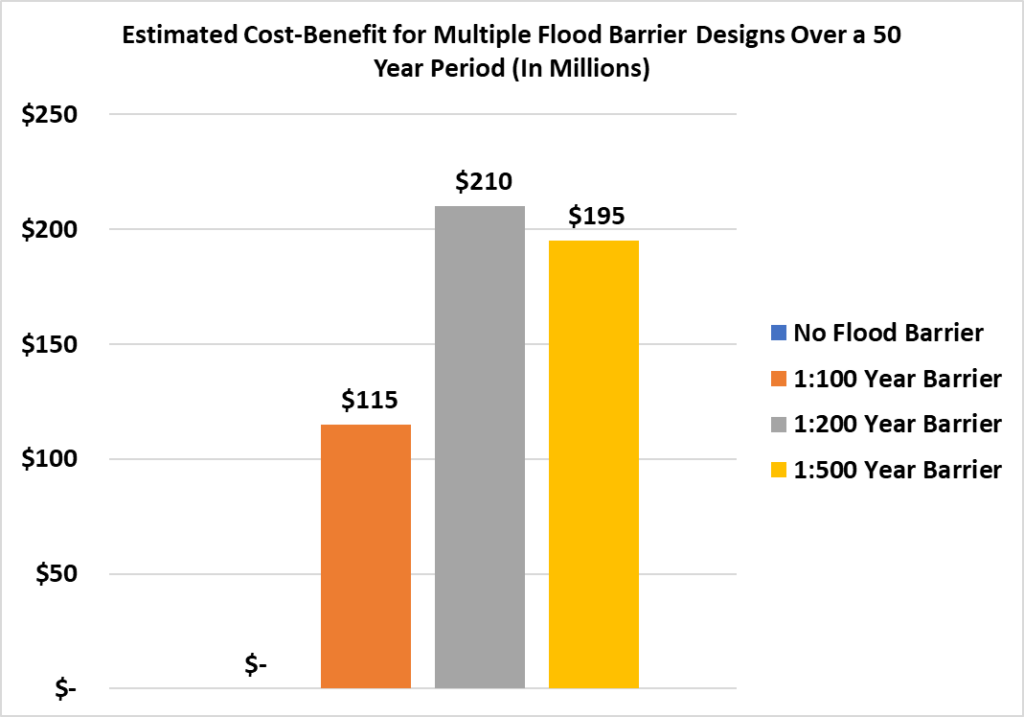
As seen very clearly from the Cost-Benefit graph, a 1:200 year flood barrier will have the most benefit over a 50 year lifespan and all of the proposed designs have a net positive impact. The downtown flood barrier is a project that is worth investing in and needs to be built as soon as possible in order to be ready next time we need it.
Partners and mentors
We want to thank the many people who helped us with this project. Our Academic Advisor, Dr. Qi Zhou, guided us through the process with patience and great advice, Dr. Ronald Wong, our Civil Engineering Professor, guided us with our geotechnical analyses, and our consultation with Mr. Darwin Durnie, our Industry Advisor, was invaluable. We want to give special thanks to our Capstone Course Coordinator, Professor Jacqueline Vera, along with Teaching Assistants Sebastian Perez and Ayla Lauret. Finally, we would like to thank the City of Calgary and Andrew Forsyth for compiling and providing us with the information we required to complete the project.

Our photo gallery
Flood Models
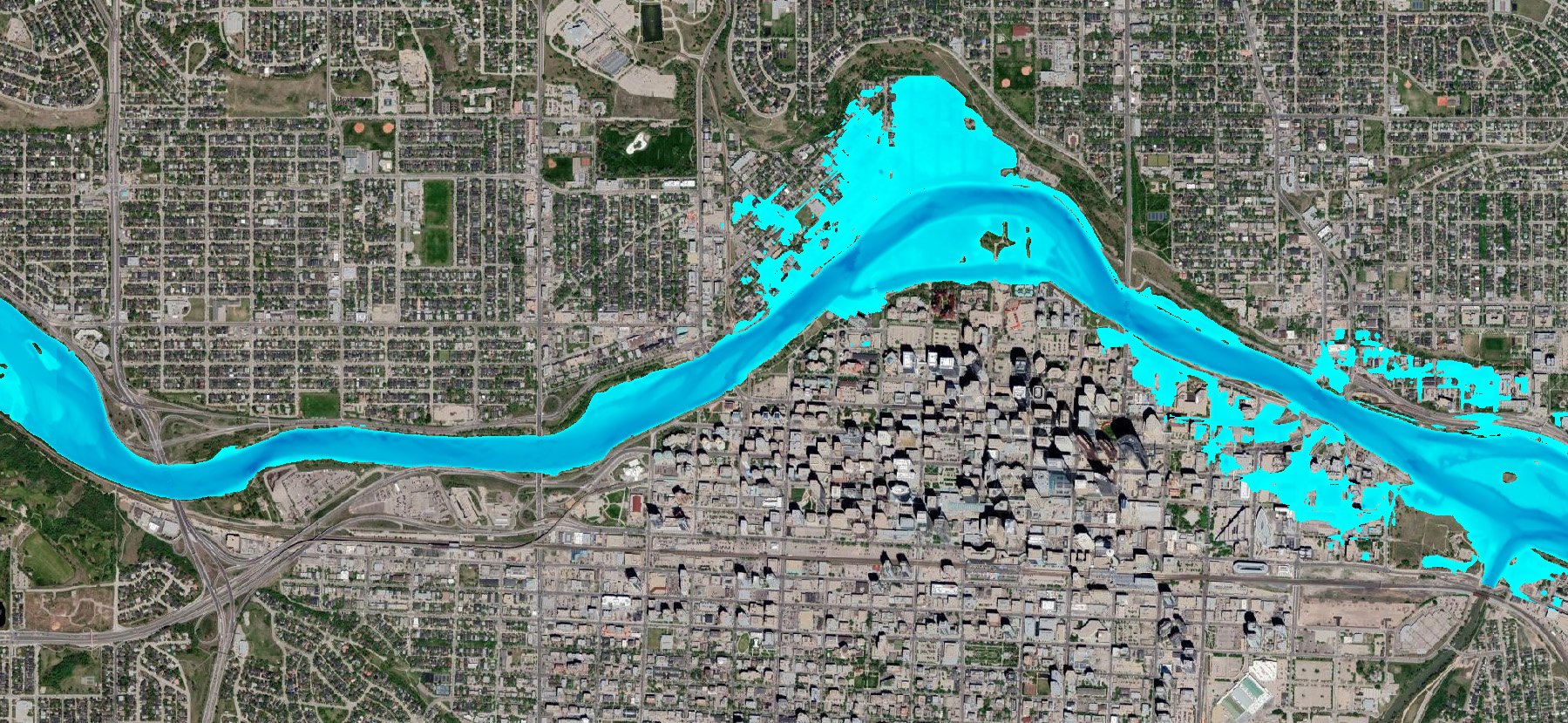
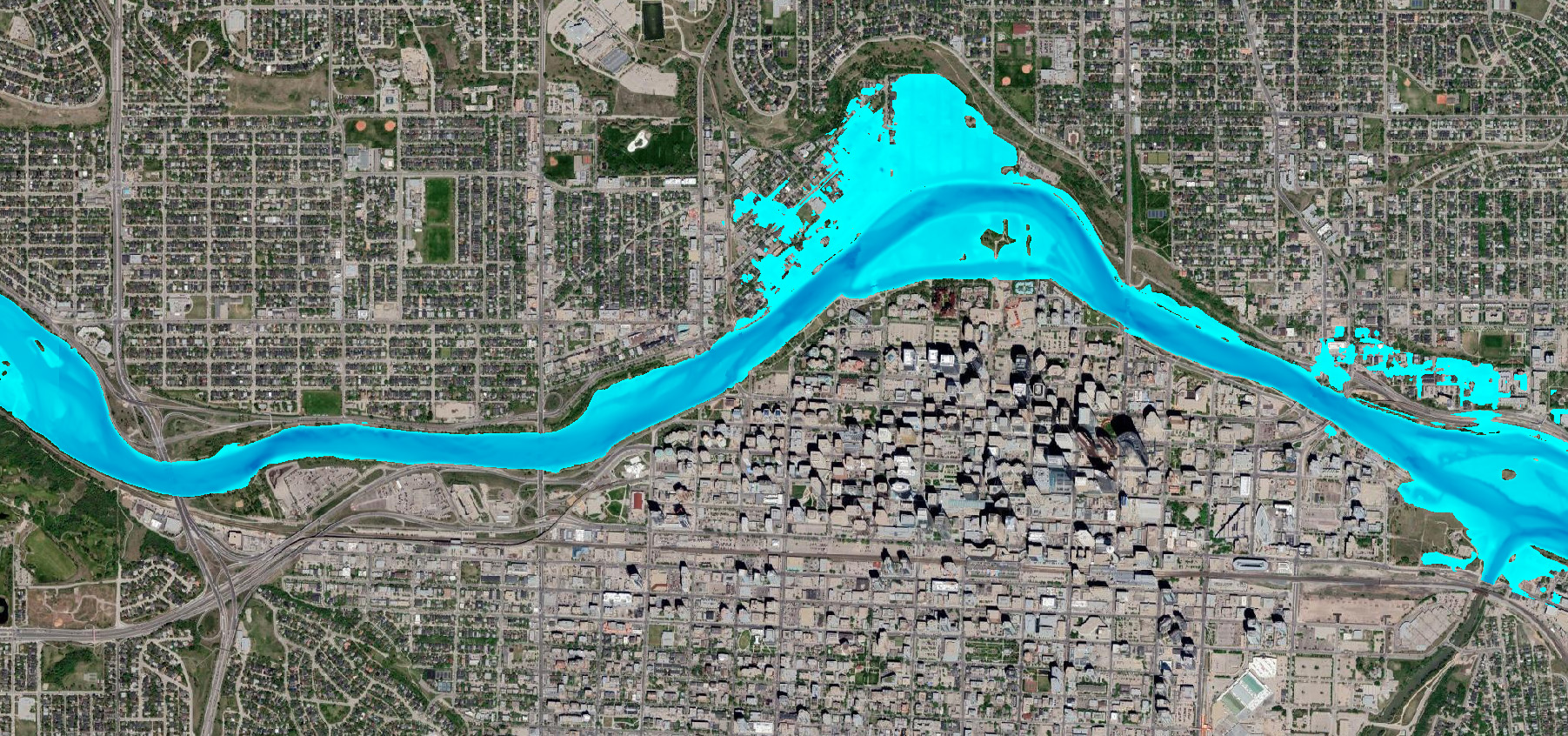
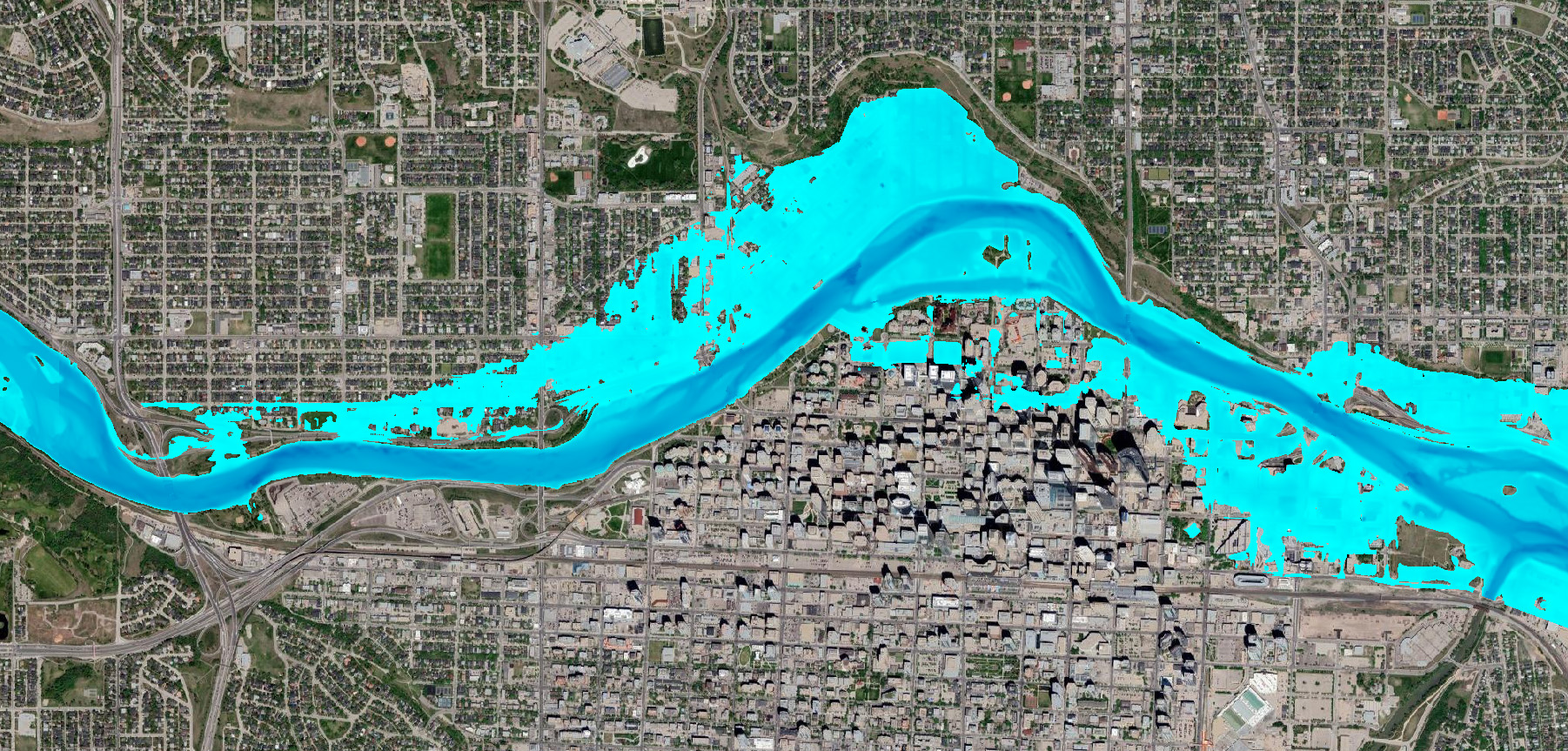
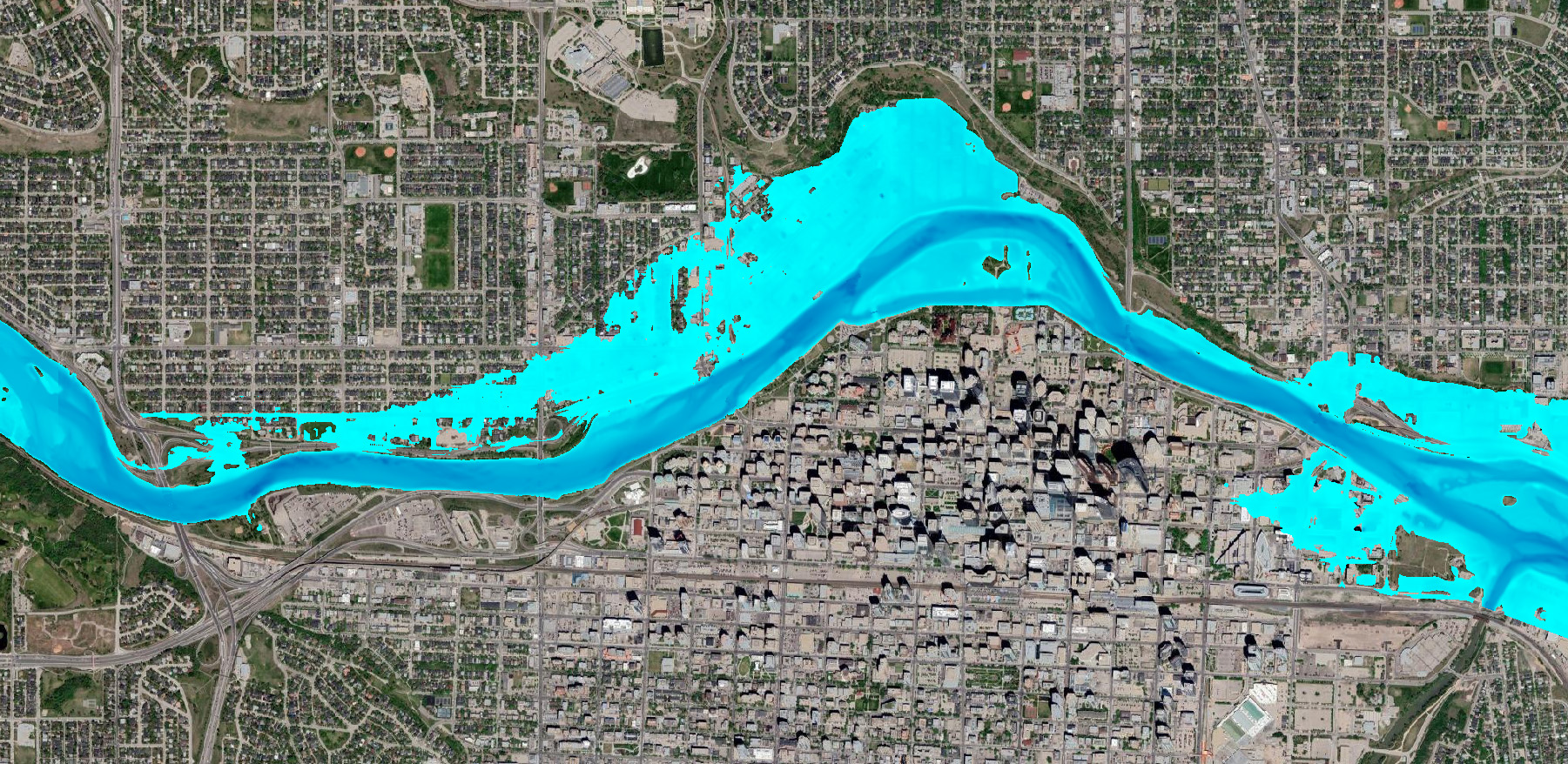
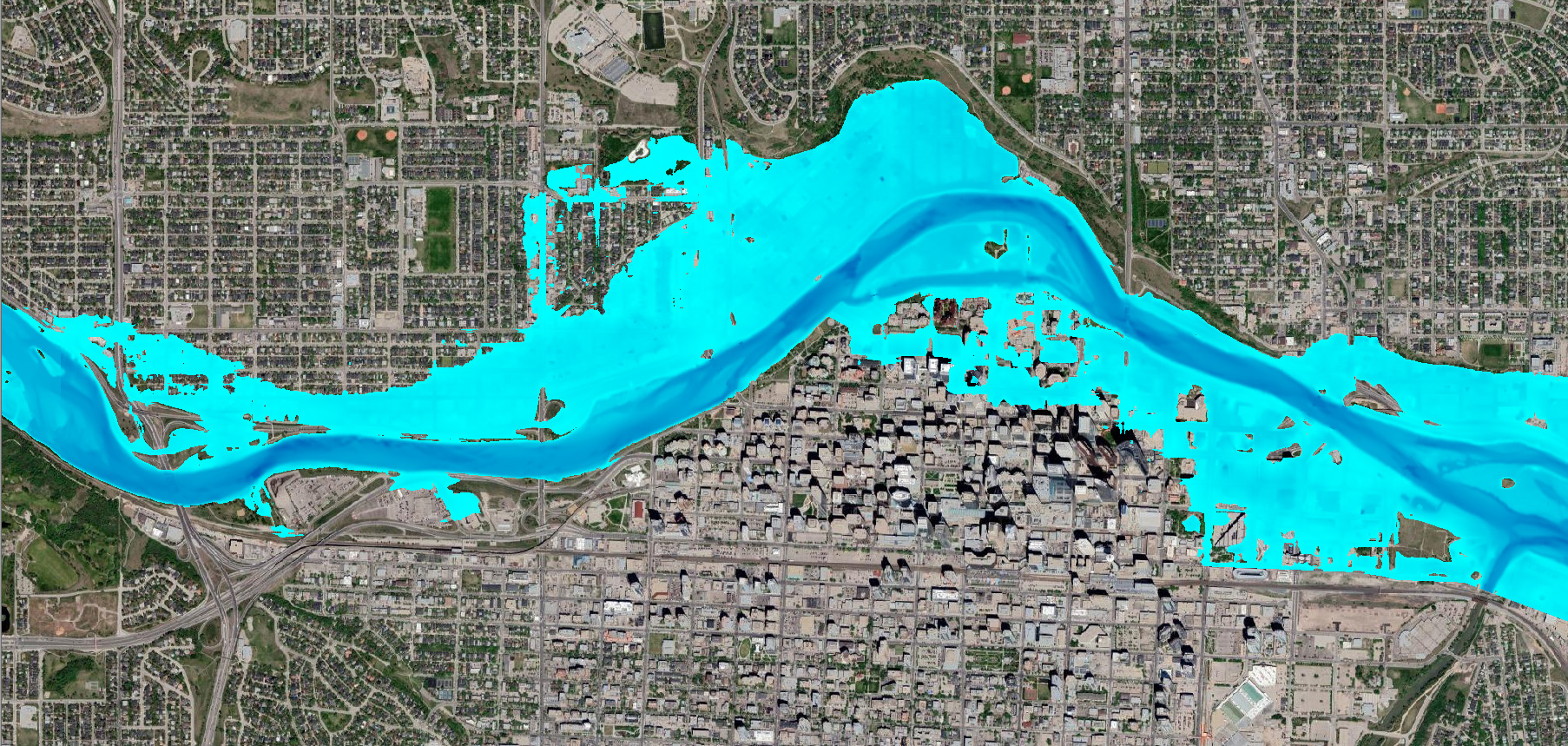

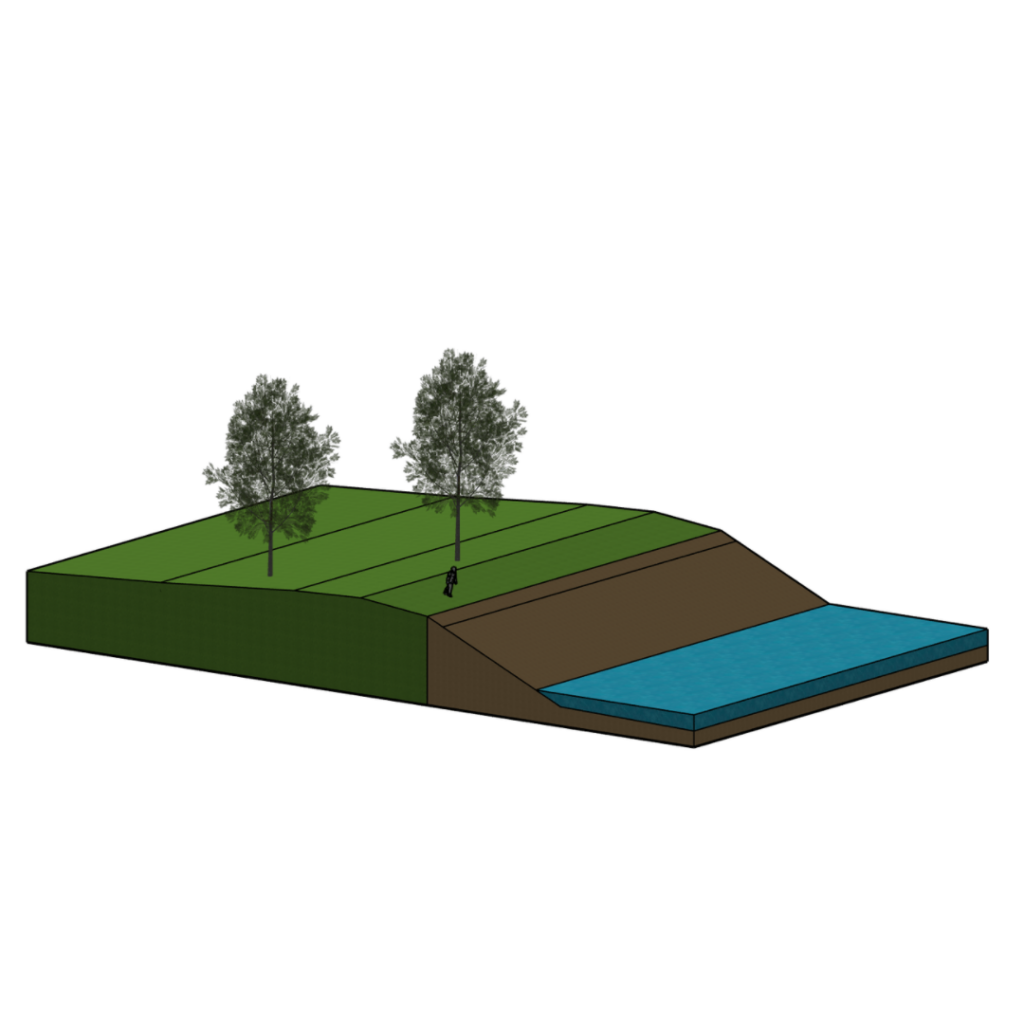
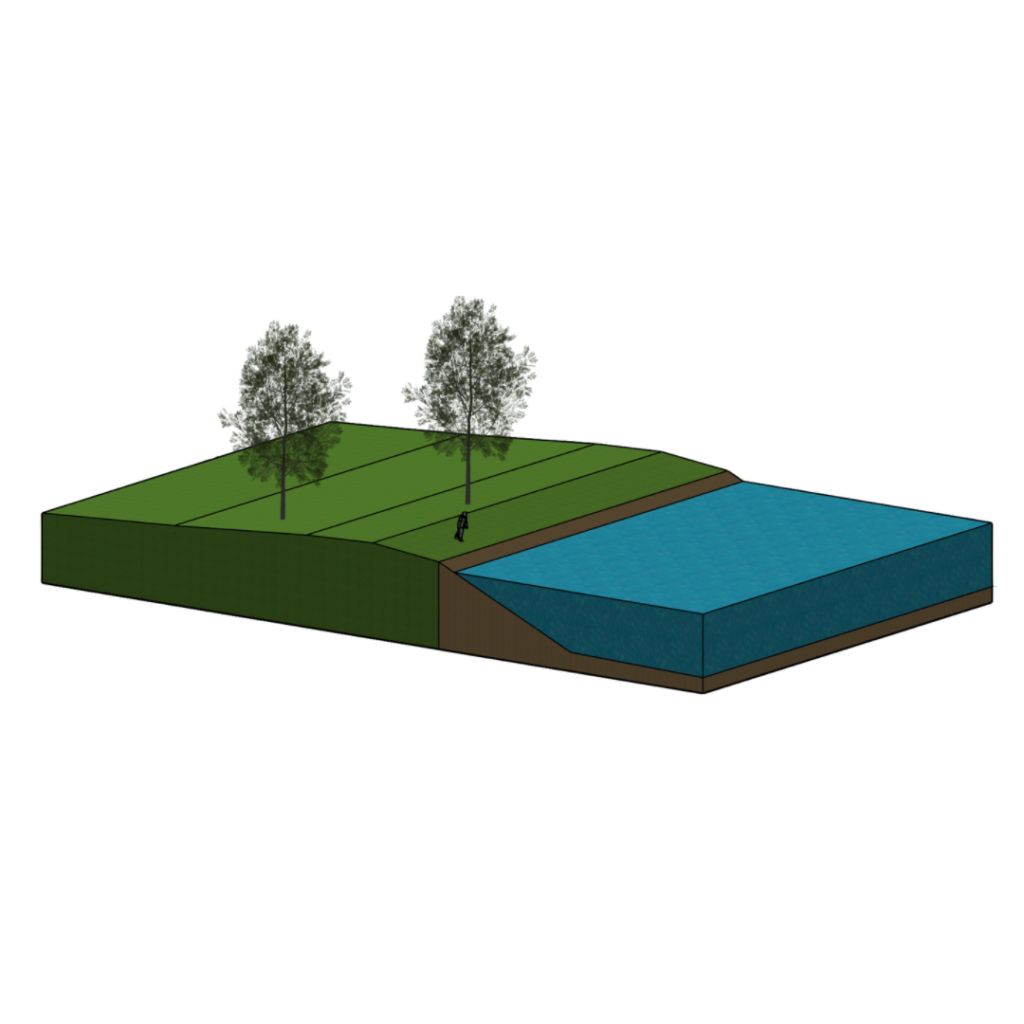
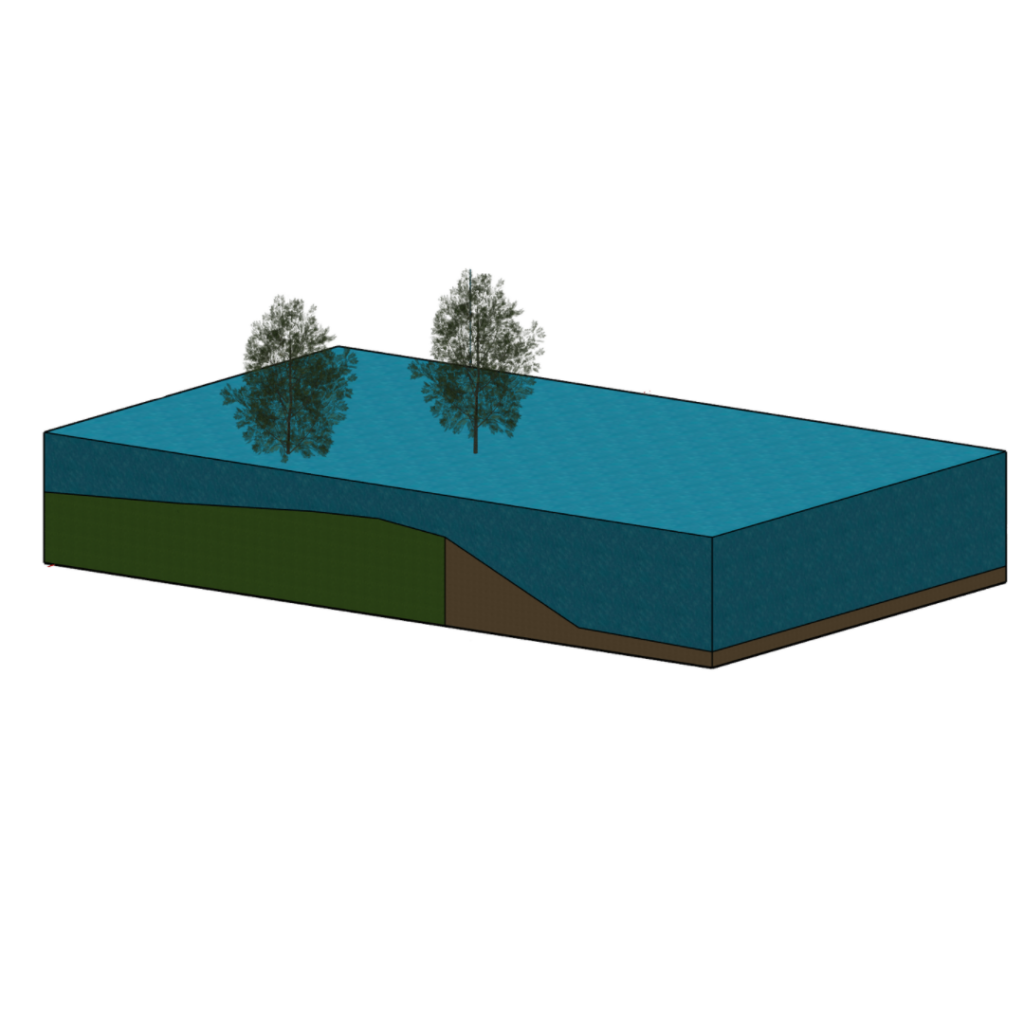
Jaipur Bridge Foundation Models

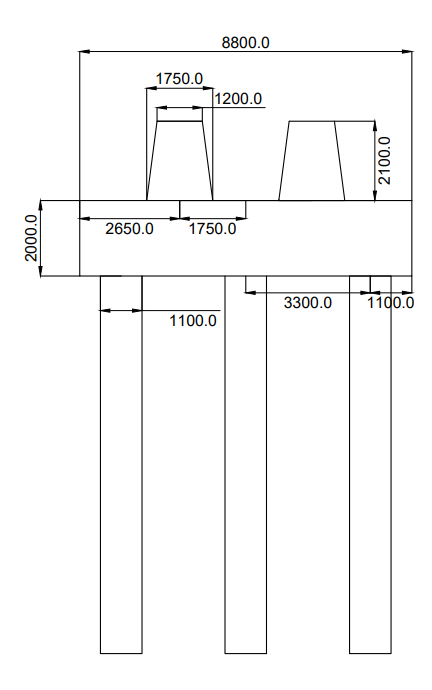

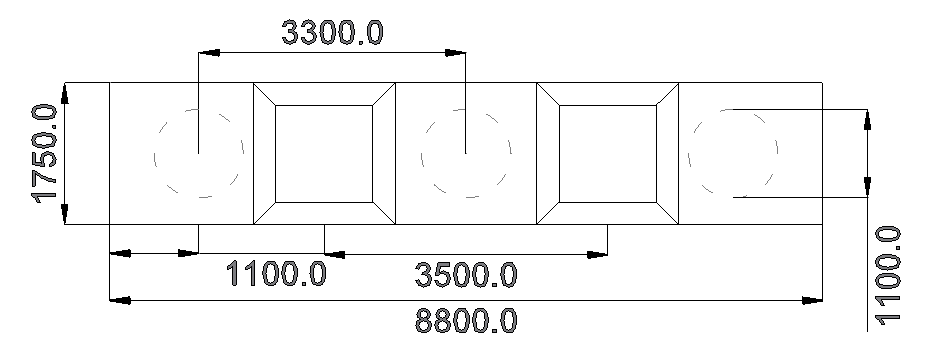
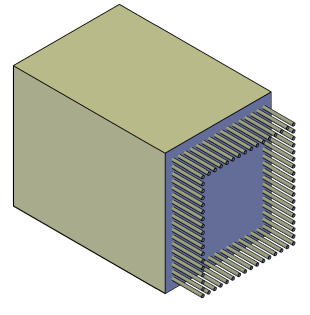

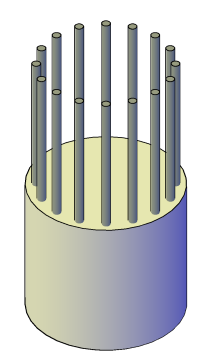
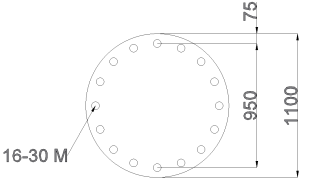
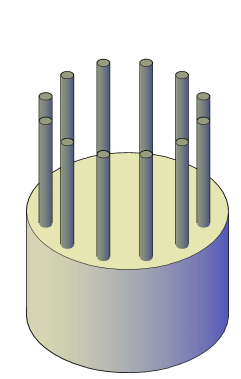
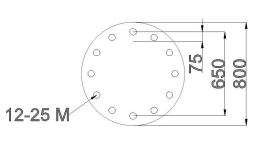

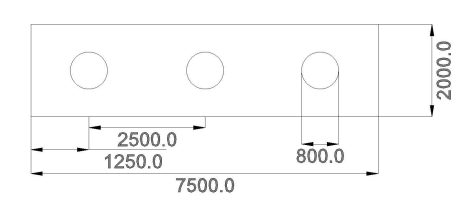
References
[1] “Flooding in Calgary – Flood of 2013”, City of Calgary, Calgary, Canada, 2021. [Online]. Available: https://www.calgary.ca/uep/water/flood-info/flooding-history-calgary.html.
[2] Request for Proposals: Eau Claire Bridge Project, City of Calgary, Calgary, Canada, Feb 2021. RFP Package No.: 20-1728.
[3] “Eau Claire Promenade and Riverwalk Hydrotechnical Assessment Report”, Klohn Crippen Berger, Calgary AB, 2020.
[4] “Basin-Wide Hydrology Assessment and 2013 Flood Documentation”, Golder Associates, Calgary, Canada, September 2014. Technical Report 13-1326-0054-2000.
[5] “Hydrology Study, Bow and Elbow River Updated Hydraulic Model Project”, Golder Associates, Calgary, Canada, March 2015. Technical Report 09-1326-1040.
[6] “Eau Claire Promenade and Riverwalk Geotechnical Design Report”, Klohn Crippen Berger, Calgary, Canada, 2020.
[7] Budhu, M., “Soil Mechanics and Foundations, 3rd Edition”, John Wiley & Sons Inc, Hoboken, NJ, 2015. ISBN: 978-0-470-55684-9
[8] Kothyari, U. C., and Jain, R. K., Influence of cohesion on the incipient motion condition of sediment mixtures, Water Resour. Res., 44, W04410, 2008, [Online]. Accessed: March 10, 2022.
[9] Flow Science, Inc., FLOW-3D® Version 12.0 Users Manual (2018), Santa Fe, NM, USA. [Online]. Accessed: Jan-April, 2022.
[10] Sustainable Development Goals, United Nations, Department of Economic and Social Affairs, 2016. [Online]. Available: https://sdgs.un.org/goals/
[11] Klohn Crippen Berger, “Biophysical Field Survey Summary”, Calgary AB, 2020.
[12] The City of Calgary, “Preliminary Environmental Construction Operations Plan”, The City of Calgary.
[13] “Provincial Flood Damage Assessment Study City of Calgary: Assessment of Flood Damages”, IBI Group, Calgary, Canada, February 2015.









